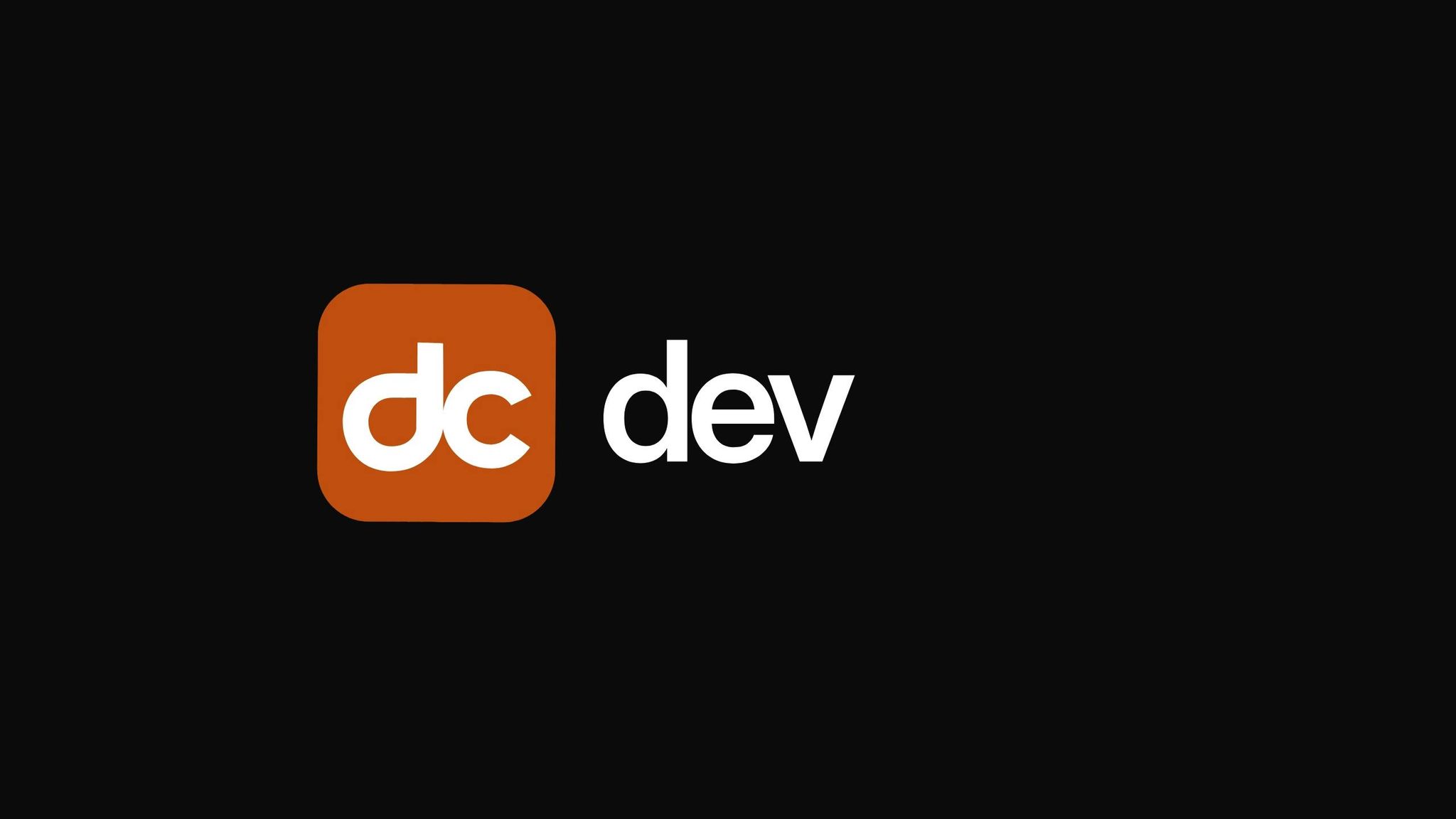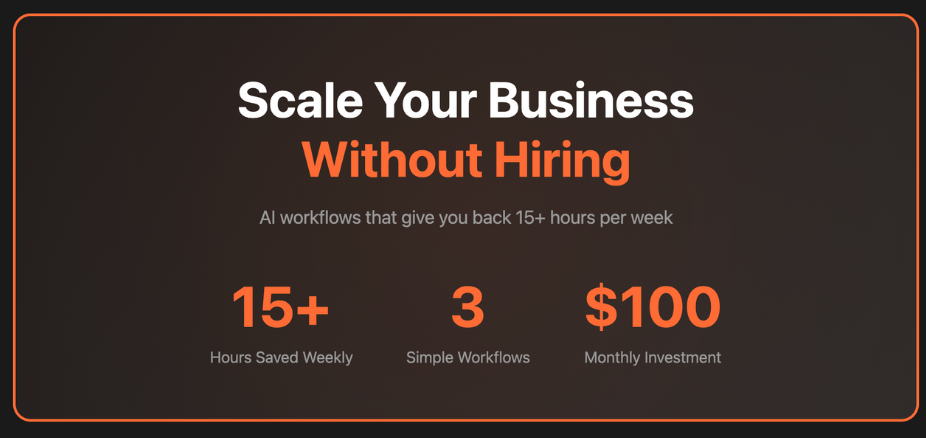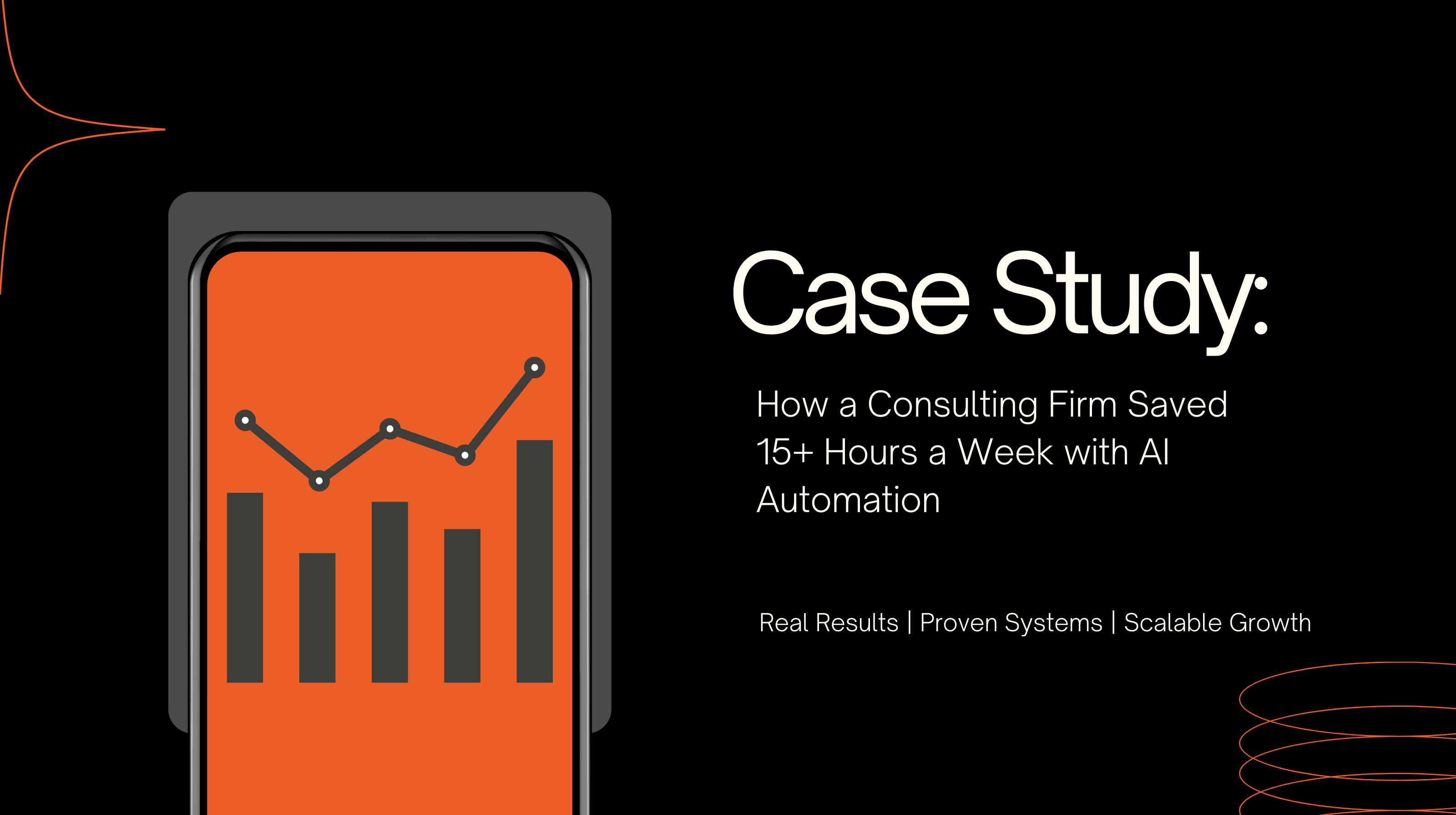Investing in custom AI solutions is a smart move if you want systems tailored to your business needs. But understanding the costs and benefits is critical to making informed decisions. Here's what you need to know:
Key takeaway: Custom AI is a long-term investment that pays off when aligned with clear business goals and tracked through detailed cost-benefit analysis.
ROI for Your AI: Budgeting, Costing, and Measuring AI Automation
Key Cost Factors in Custom AI Solutions
Understanding the costs involved in custom AI solutions can help you plan and budget effectively. Let’s break it down into key categories.
Upfront Costs
The initial investment in custom AI solutions includes several critical components. Data acquisition and preparation typically account for 15–25% of the total project cost. Algorithm development and customization add another 20–30%.
Infrastructure expenses, such as cloud computing, storage, and processing power, contribute 10–20% to the overall budget. Integration with existing systems, which is essential for seamless operation, can add 15–25%.
The total cost depends on the project’s scope and complexity. For example:
"AI is powerful, yet it is not cheap. The cost of developing AI solutions can vary massively. A simple rule-based assistant may cost tens of thousands, while advanced generative AI models could stretch into hundreds of thousands or more."
Just data preparation can range from $5,000 to over $100,000, depending on the complexity and volume of data.
"AI is only as good as the data it learns from. And data is not free - either in cost or effort."
For example, Siemens’ AI-driven maintenance solution, Senseye, required significant initial investment but now helps factories reduce unexpected equipment shutdowns by 50% and cut maintenance costs by up to 40%.
Once deployed, companies must also manage ongoing operational costs.
Recurring Expenses
After implementation, recurring costs become a dominant factor. These are typically managed through pricing models like:
Cloud infrastructure costs continue to scale with usage and data processing needs. Regular updates and maintenance are essential to keep systems secure and effective.
Netflix’s recommendation engine is a prime example of a high-impact AI system. It drives 80% of the platform's views and saves the company an estimated $1 billion annually. Additionally, 75–80% of Netflix’s revenue is attributed to its hyper-personalized recommendations.
Virgin Atlantic also saw quick returns from its predictive routing AI solution by Genesys. According to Louise Phillips, VP of Customer Centres:
"Our agents now feel like they're providing great service to the right person at the right time and are able to take ownership of the relationships with customers to truly build a rapport with them. This has raised employee morale which in turn allows them to provide better service and feel proud of their hard work."
Human Capital and Expertise
Beyond infrastructure and operational costs, human expertise is a major expense. AI team costs can represent 40–60% of total project expenses, with salaries for AI professionals ranging from $120,000 to $300,000 annually.
Specialists like data scientists, machine learning engineers, and AI architects are essential. Training existing employees to work with AI systems costs an additional $1,500–$5,000 per person. This investment ensures your team can effectively leverage the technology.
For instance, H&M’s AI-powered Virtual Shopping Assistant now resolves 70% of customer queries instantly, increases completed purchases by 25% during chatbot-assisted sessions, and reduces live agent workloads by 40%.
The skills gap also affects leadership roles, making strategic decision-making around AI investments challenging. Walmart addressed this by developing in-house AI capabilities, leading to a 1.5% reduction in supplier deal costs and a 20% cut in unit costs through automation.
Strategic partnerships with experienced AI consultancies can help companies navigate these challenges and control costs. Mark Rickmeier, CEO of TXI, captures this sentiment well:
"Success isn't about project completion - it's about outcomes."
One example of collaboration is Roofle Inc.’s Roof Quote Pro platform, developed with Coherent Solutions. This AI-powered tool generates accurate roofing quotes in 40 seconds. Within eight months, it gained over 500 subscribers, achieved a 40% close rate on product demos, and increased conversion rates by 12%.
Measuring and Tracking Benefits
When it comes to evaluating a project's success, measuring benefits is just as important as managing costs. For example, over 55% of retailers report achieving an AI return on investment (ROI) exceeding 10% by systematically tracking relevant metrics.
However, capturing the full range of benefits - both tangible and intangible - can be tricky. Nearly half of organizations (49%) struggle to demonstrate the value of their AI initiatives, often because they focus too narrowly on obvious metrics. Let’s dive into how custom AI solutions can lead to efficiency gains, better decision-making, and revenue growth.
Improved Efficiency
Efficiency improvements are one of the most visible ways to validate AI investments. Custom AI solutions streamline workflows by automating repetitive tasks, speeding up processes, and reducing error rates.
Take Bank of America's Erica as an example. This AI-powered virtual assistant, launched in 2018, now handles around 2.4 billion interactions annually with a 98% containment rate, serving 20 million active users. Impressively, 90% of the bank's employees use Erica, which has cut IT support calls by over 50% since 2020.
Key metrics to measure efficiency include:
For instance, Hermès experienced a 35% boost in customer satisfaction after introducing an AI-powered chatbot. This highlights how efficiency improvements can directly enhance customer experiences.
To accurately measure these gains, establish baseline metrics before implementing AI. Without clear before-and-after comparisons, it’s tough to quantify results or justify further investments.
Better Accuracy and Decision-Making
AI's ability to process vast amounts of data enables more accurate insights and faster, better-informed decisions. These capabilities reduce risks and optimize operations.
A standout example is Stitch Fix, a personal styling service that experienced 88% growth, reaching $3.2 billion between 2020 and 2024. Much of this success came from its AI-driven personalization, which increased the average order value by 40%. By analyzing customer preferences, inventory, and fashion trends, Stitch Fix’s AI delivers highly accurate styling recommendations at scale.
Here are some metrics to track decision-making improvements:
Companies using AI in IT operations, decision-making, and customer service report at least 65% returns in each area. These results stem from AI's ability to eliminate human biases and inconsistencies while processing information far faster than traditional methods.
Stuart King, CTO of AnzenSage, sums it up well:
"Aligning AI with concrete business goals is key to seeing real returns and measuring ROI for AI projects."
Revenue Growth and Competitive Edge
AI is also a powerful driver of revenue growth and market differentiation, unlocking new opportunities and strengthening a company’s position.
AI contributes to revenue growth in several ways:
To track revenue-related benefits, focus on these indicators:
Mary Carmichael, a member of ISACA's Emerging Trends Working Group, offers valuable advice:
"The key to success involves developing a return on investment (ROI) framework that is customized to align with your organization's AI strategy and associated goals, with anticipated benefits identified."
70% of executives believe that improved KPIs and performance gains are critical to business success. This underscores the importance of linking AI performance metrics directly to business outcomes.
The most effective organizations combine quantitative metrics with real user feedback to gain a complete understanding of AI's impact. This ensures both measurable improvements and qualitative benefits are captured, even those that don’t show up in financial reports.
Hervé Coureil, chief governance officer at Schneider Electric, highlights the need for adaptability:
"We want our KPIs to evolve over time because we don't want to drive our business on legacy or vanity metrics."
This underscores the importance of continuously refining your measurement framework as AI systems mature and business needs evolve.
Calculating ROI for Custom AI Investments
Understanding the benefits of custom AI is one thing, but calculating its ROI is where the real impact becomes clear. Measuring ROI for AI projects requires a thoughtful approach that factors in both immediate results and the broader value they bring over time.
On average, enterprise AI initiatives report a 5.9% ROI. However, this figure often reflects poor planning and measurement rather than AI's potential. A 2023 IDC global study revealed that every $1 invested in AI delivers an average return of $3.50. The difference lies in how companies calculate and track their ROI. Let’s explore the key metrics, tools, and strategies to measure and refine your AI investments effectively.
ROI Metrics and Calculations
Accurate ROI measurement starts by identifying the right metrics. AI projects benefit from a framework that considers both measurable outcomes and less tangible advantages. These metrics guide decisions and highlight areas of improvement.
Here are some key metrics to track:
For instance, a Microsoft survey found that organizations leveraging AI saw an 18% increase in customer satisfaction, employee productivity, and market share. Similarly, PayPal’s AI-driven initiatives led to notable revenue growth and reduced losses.
Establishing SMART goals - Specific, Measurable, Achievable, Relevant, and Time-bound - is essential for setting clear baselines and tracking progress. Deloitte’s research highlights areas with high returns from AI, such as customer service and experience (74%), IT operations (69%), and decision-making processes (66%). Moreover, companies with advanced AI operations report a 33% faster model deployment and a 25% drop in errors.
Financial Analysis Tools
Traditional financial tools can be adapted to better evaluate AI investments, capturing their unique long-term benefits. Combining multiple methods often provides the most accurate picture.
McKinsey estimates that generative AI tools for coding can speed up software development by 35% to 45%. These productivity gains highlight how AI reduces costs while boosting efficiency.
Avoid common missteps in ROI calculations, such as ignoring uncertainties, focusing on short-term gains, or evaluating projects in isolation. Taking a portfolio approach allows businesses to assess the collective impact of all AI initiatives.
Continuous Monitoring and Optimization
To maximize long-term value, ROI calculations shouldn’t be a one-time effort. Continuous monitoring and refinement ensure AI systems remain aligned with business goals. For example, companies that closely followed AI best practices reported a median ROI of 55% on generative AI projects.
Real-time performance tracking is critical for spotting issues early and making necessary adjustments. PayPal’s AI-driven cybersecurity strategy is a great example. Their deep learning system for fraud reduction and customer protection is constantly reviewed and fine-tuned based on performance data and evolving needs.
Key strategies for optimization include:
Kevin Chang, a Training Data Operations Consultant, offers this advice:
"Always start with the need, before the AI. AI is a cool piece of technology and a lot can be learned by simply trying it out, but it's always better to apply AI to a problem you have right now."
Aisera’s AI platform showcases this approach, helping businesses achieve up to 50–70% cost savings in support and IT service management. The most successful companies continuously assess ROI, tracking both performance metrics and qualitative feedback to ensure their AI evolves alongside their goals.
As Molly Lebowitz, Propeller Managing Director for the Tech Industry, points out:
"Measuring results can look quite different depending on your goal or the teams involved. Measurement should occur at multiple levels of the company and be consistently reported. However, in contrast to strategy, which must be reconciled at the highest level, metrics should really be governed by the leaders of the individual teams and tracked at that level."
This layered approach to measurement ensures that ROI optimization happens both strategically and operationally, unlocking the full potential of AI investments over time.
Devcore's Approach to Custom AI Cost-Benefit Analysis

When it comes to implementing custom AI solutions, a well-structured cost-benefit analysis is essential. Devcore has crafted a methodology that goes beyond standard ROI calculations, focusing on delivering tangible business results. Their exclusive framework and specialized services ensure every investment is carefully assessed, building on the ROI strategies discussed earlier.
The Leverage Blueprint™ Framework
At the core of Devcore's strategy is the Leverage Blueprint™, a framework designed to turn intuitive business processes into scalable, AI-powered solutions. This system identifies inefficiencies and aligns AI solutions with your company’s specific workflows, data structures, and goals. The result? Scaled operations that maintain your business's unique identity.
The Leverage Blueprint™ workshop takes a deep dive into your current processes, uses storytelling to integrate AI into your brand, and sets clear milestones for implementation.
"The difference between an expert and a thought leader is a framework." - Donald Miller
Custom AI and Automation Services
Devcore focuses on reducing costs and boosting revenue through task automation and improved decision-making. Tasks like CRM updates, email management, call summaries, data entry, and lead research are streamlined using AI tools. Their solutions include research agents, lead-matching systems, and content generators, all tailored to address specific operational challenges.
Technical services such as API integrations, custom dashboards, and workflow optimization tools ensure these AI solutions fit seamlessly into your existing operations. Businesses that implement these tailored AI systems often see significant results. For instance, a manufacturing company that adopted a custom AI quality control system reduced defect rates by 32%, achieved a 285% ROI within 18 months, and saw a 47% drop in customer complaints alongside a 28% decrease in warranty claims.
Business-Focused Solutions
Devcore’s scalable AI systems are designed to evolve and improve over time, ensuring that initial investments continue to deliver value. To accommodate businesses of various sizes and needs, Devcore offers three service tiers:
This tiered structure allows businesses to scale their AI investments at a manageable pace while maintaining transparency in costs and projected outcomes. Companies using these structured AI methodologies report a 52% improvement in process efficiency.
Devcore also prioritizes compliance and regulatory standards from the outset. For example, a healthcare provider implemented a HIPAA-compliant AI system for patient record analysis, incorporating features like data anonymization, encrypted storage, and role-based access controls. Similarly, a financial services firm developed an AI-driven loan approval system with built-in explainability to meet fair lending regulations.
Businesses leveraging structured AI frameworks have reported up to 35% higher profitability compared to competitors using generic systems. These methodologies enable faster innovation, smarter execution, and greater adaptability, providing a clear edge over static systems.
Key Takeaways
Summary of Costs and Benefits
Investing in custom AI solutions requires weighing upfront costs against long-term gains. Initial expenses can range from $50,000 for simpler implementations to upwards of $500,000 for enterprise-level projects. A significant portion of these costs - around 40–60% - is tied to personnel, with senior AI engineers expected to earn between $150,000 and $200,000 annually by 2025.
Despite these initial expenses, the potential returns are compelling. Custom AI projects often deliver returns of 3X–8X, with well-executed implementations reducing costs in targeted processes by 15–30% and increasing productivity by 20–35% in key areas. Additional advantages include ownership of intellectual property, independence from vendors, and the ability to handle large datasets without incurring extra fees. These factors underscore the strong financial opportunities that custom AI can unlock.
Why Custom AI Is Worth the Investment
Custom AI solutions do more than just cut costs - they can boost productivity by as much as 40%, offering strategic advantages as the global AI market is projected to hit $1.81 trillion by 2030 . Tailored AI systems are designed to align closely with specific business objectives, often outperforming off-the-shelf alternatives.
Consider real-world examples: Netflix relies on AI for 80% of its recommendations, giving it a competitive edge. In manufacturing, AI-driven robots efficiently handle repetitive tasks, reducing expenses and improving accuracy. In healthcare, AI is transforming early disease detection by analyzing medical images, while in recruitment, it minimizes bias by focusing on candidate skills rather than demographics. These examples highlight how custom AI can deliver impactful, industry-specific results. With the right guidance, such as from a partner like Devcore, businesses can fully harness these benefits.
Next Steps with Devcore
Custom AI's cost-efficiency and productivity gains make it a smart investment, and Devcore offers a clear path to success. Their structured Leverage Blueprint™ framework ensures that AI solutions are tailored to fit your workflows and business goals. Devcore provides flexible pricing to meet diverse needs: the Starter Plan at $1,200/month offers an accessible entry point, while the Enterprise Plan at $15,000/month delivers comprehensive support for larger-scale projects.
To maximize your AI investment, start by defining clear objectives and rolling out implementations in phases. Devcore's process includes integration readiness assessments to identify potential challenges early, helping you avoid unexpected costs and delays. By focusing on measurable outcomes, they ensure that ongoing maintenance continues to generate strong returns.
For a successful custom AI journey, establish performance metrics and monitoring systems from the start. Implement solid data governance strategies early on, and prioritize projects that demonstrate clear business value . With AI's potential to contribute $5 trillion annually by driving productivity across sectors, the real question isn't whether to invest, but how soon you can start reaping its transformative benefits.
FAQs
What should I consider when choosing between custom and off-the-shelf AI solutions for my business?
When weighing custom AI solutions against off-the-shelf AI tools, it’s important to consider your business goals, budget, and long-term plans. Custom AI is best suited for businesses that need a solution tailored to their specific requirements. It provides greater control over data, integrates smoothly with existing systems, and can grow alongside your business. While the upfront cost might be higher, it delivers specialized advantages that can help set your business apart.
In contrast, off-the-shelf AI tools are often more affordable at the start and can be implemented quickly. They work well for businesses with straightforward needs or tighter budgets. Deciding between the two comes down to how much customization and future value you need to support your objectives.
How can I calculate the ROI of a custom AI solution and ensure it supports my business objectives?
To figure out the ROI of a custom AI solution and make sure it matches your business goals, start by setting clear objectives and measurable outcomes. Pinpoint the financial gains, like higher revenue or cost reductions, as well as operational perks, such as improved efficiency or better customer experiences.
Next, calculate the total investment. This includes everything: development, implementation, and ongoing maintenance. Compare these costs to the expected benefits. You can use the formula ROI = (Net Benefits / Total Investment) × 100% to determine profitability.
Keep an eye on key performance indicators (KPIs) and tweak your strategies as needed. This ongoing evaluation helps ensure your AI solution generates real, measurable value for your business.
How can businesses effectively manage and reduce the ongoing costs of custom AI solutions?
To keep expenses in check for custom AI solutions, it's crucial to prioritize ongoing performance monitoring. This helps pinpoint inefficiencies and ensures resources are being used effectively. Regularly fine-tuning models and updating infrastructure can prevent overspending on unused capacity or outdated tools.
Another smart move is to opt for scalable service tiers that match your current requirements. This way, you're only paying for what you actually use. Taking the time to periodically evaluate your AI system's performance and return on investment can also reveal ways to simplify operations and eliminate unnecessary costs.
Related posts
- Manual Workflows Slowing Growth? AI Solutions
- How to Measure Automation ROI: 6 Key Metrics
- Custom AI Models for Predictive Analytics
- Custom AI vs. Off-the-Shelf Tools
{"@context":"https://schema.org","@type":"FAQPage","mainEntity":[{"@type":"Question","name":"What should I consider when choosing between custom and off-the-shelf AI solutions for my business?","acceptedAnswer":{"@type":"Answer","text":"<p>When weighing <strong>custom AI solutions</strong> against <strong>off-the-shelf AI tools</strong>, it’s important to consider your business goals, budget, and long-term plans. Custom AI is best suited for businesses that need a solution tailored to their specific requirements. It provides greater control over data, integrates smoothly with existing systems, and can grow alongside your business. While the upfront cost might be higher, it delivers specialized advantages that can help set your business apart.</p> <p>In contrast, off-the-shelf AI tools are often more affordable at the start and can be implemented quickly. They work well for businesses with straightforward needs or tighter budgets. Deciding between the two comes down to how much customization and future value you need to support your objectives.</p>"}},{"@type":"Question","name":"How can I calculate the ROI of a custom AI solution and ensure it supports my business objectives?","acceptedAnswer":{"@type":"Answer","text":"<p>To figure out the ROI of a custom AI solution and make sure it matches your business goals, start by setting <strong>clear objectives and measurable outcomes</strong>. Pinpoint the financial gains, like higher revenue or cost reductions, as well as operational perks, such as improved efficiency or better customer experiences.</p> <p>Next, calculate the total investment. This includes everything: development, implementation, and ongoing maintenance. Compare these costs to the expected benefits. You can use the formula <strong>ROI = (Net Benefits / Total Investment) × 100%</strong> to determine profitability.</p> <p>Keep an eye on key performance indicators (KPIs) and tweak your strategies as needed. This ongoing evaluation helps ensure your AI solution generates real, measurable value for your business.</p>"}},{"@type":"Question","name":"How can businesses effectively manage and reduce the ongoing costs of custom AI solutions?","acceptedAnswer":{"@type":"Answer","text":"<p>To keep expenses in check for custom AI solutions, it's crucial to prioritize <strong>ongoing performance monitoring</strong>. This helps pinpoint inefficiencies and ensures resources are being used effectively. Regularly fine-tuning models and updating infrastructure can prevent overspending on unused capacity or outdated tools.</p> <p>Another smart move is to opt for <strong>scalable service tiers</strong> that match your current requirements. This way, you're only paying for what you actually use. Taking the time to periodically evaluate your AI system's performance and return on investment can also reveal ways to simplify operations and eliminate unnecessary costs.</p>"}}]}




